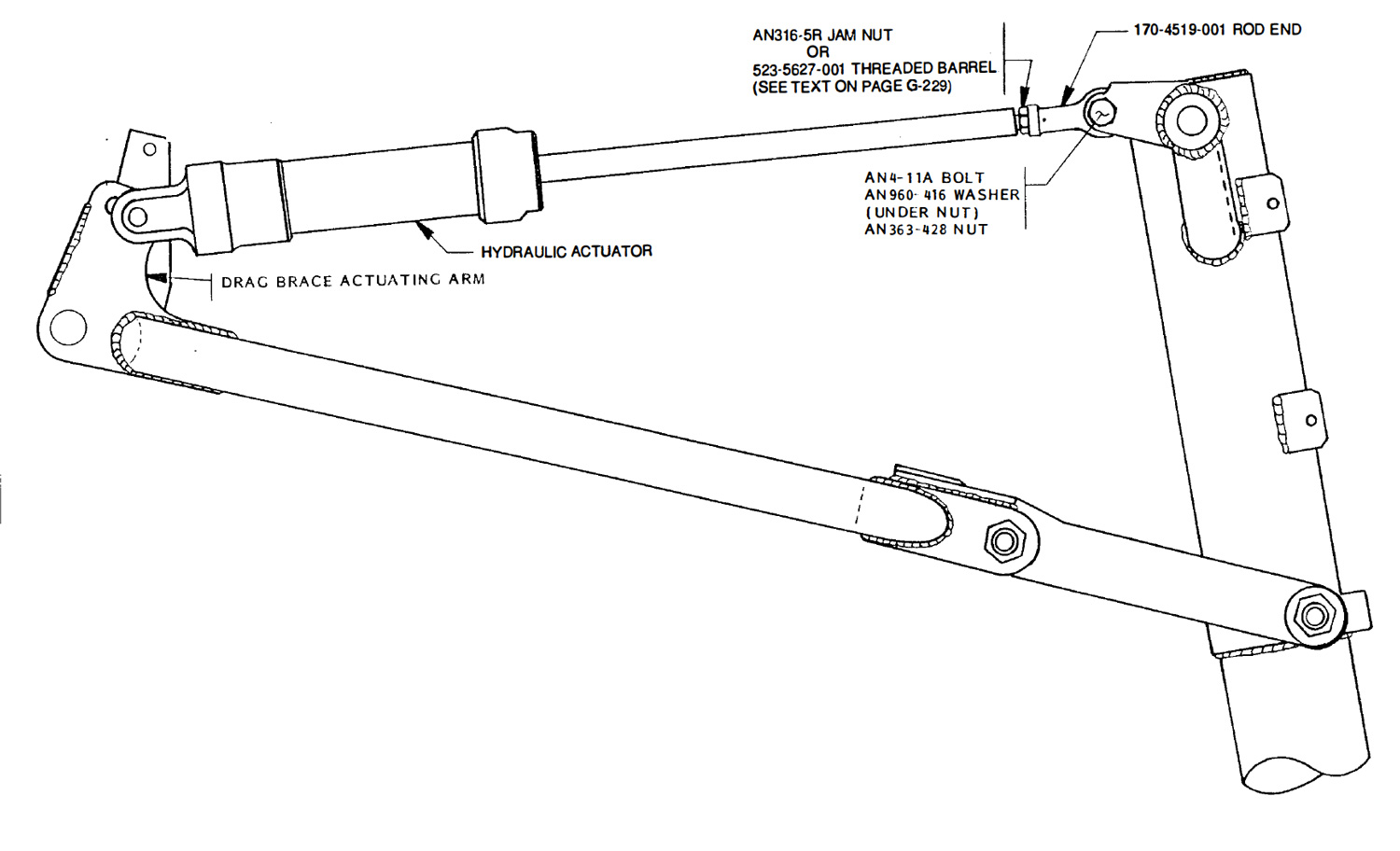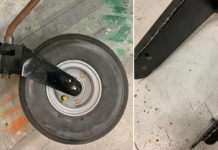Tip submitted by Tom Hoffman, Glasair III.
It seems that anywhere there are discussions by Glasair III builders/flyers, there continues to be talk of incomplete main gear retraction. Sometimes this is a chronic problem, and sometimes it is sporadic, but it seems to be continuing in spite of many suggested fixes.
After four years of difficulty, this problem on N540DE has been permanently solved. I feel that what was done in this case should correct the problem in any III without going to extreme measures or unnecessary expense.

First, lets assume that all construction was done in accordance with the S-H construction manual and that all tolerances in the gear mechanism are correct, with the uplocks adjusted properly, etc. Be certain that all clearances are adequate at the wheel wells and that the gear doors are fit and adjusted. Gear doors can warp with time and excessive heat conditions and cause interference. An adjustment made on jacks in a cool hangar may change as the aircraft sits on a 90–100° ramp. Each airplane is different, but it may be necessary, for example, to have a slightly loose adjustment of the strut door on the jacks so that heat changes do not cause binding after takeoff in high-temperature conditions. Overall, however, this condition is probably not a significant contributor to the problem.
Second, be sure you have the latest S-H recommended hydraulic pump and an up-pressure limit switch that is working properly. The upgrade hydraulic pump (see Service Bulletin 128) is set so that the up-pressure may be as much as 200–300 psi greater than some of the pumps in early kits. The pressure in some of the early pumps was marginal enough that it did not even reach the level of the up-pressure cutoff switch, which allowed the pump to continue operating with the gear in the up position but not forced into the uplocks. If you are still having a problem and haven’t changed pumps, make the change. You won’t be sorry!
The third and last item, and the one that may be the most important, is the proper adjustment of the main gear actuator rods. This is the one adjustment that I overlooked for so long that when corrected, resulted in final resolution of the problem. By lengthening the actuator rod from one quarter to one full turn at the rod end, you will see an immediate change in the force with which the trunnion seats in the uplock. This will be immediately noticeable with the aircraft on the jacks. Make only the smallest adjustment necessary for more positive seating in the uplock.
And don’t panic! This adjustment is easy to do. Simply by loosening the jam nut at the rod end, the actuator rod itself can then be turned easily (with soft jawed pliers) with the gear in a mid-transit position so there is no load on the actuator. Be careful to grab the actuator rod as near to the rod end as possible to prevent scoring on the section that enters the cylinder. With proper use of padded-jaw pliers, this should not be a problem in any event. Mark the rod with a marking pen for reference prior to any adjustment. Only a very small adjustment should be necessary to achieve the desired result. This is important so that components are not under excessive load while the gear is in the uplock position. When satisfied, be sure to retighten the jam nuts. Once this adjustment is correct, it may be possible to readjust the strut doors for a tighter fit.
Many changes in flying technique during takeoff have been suggested to achieve full gear retraction. High deck angle, slower acceleration and lower power settings have been suggested. However, after performing all the above corrections and adjustments, gear retraction on N540DE is proper regardless of flying technique or power setting.
Attention to detail is the key here, as it is with all that we do on these fabulous aircraft.



